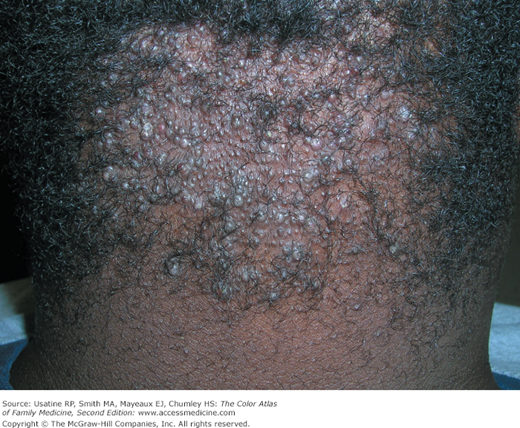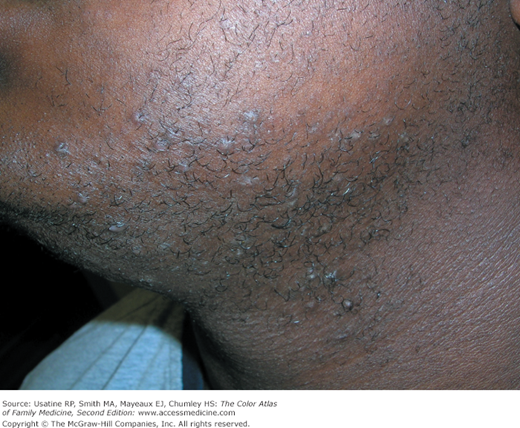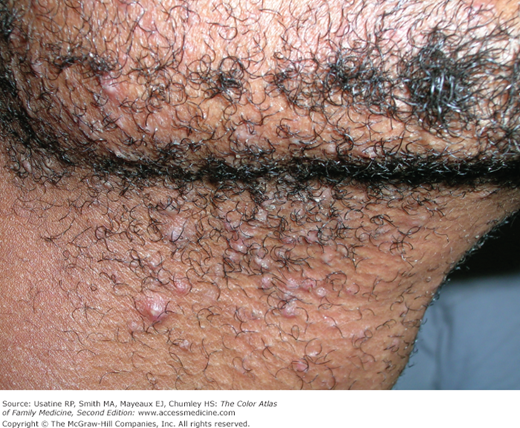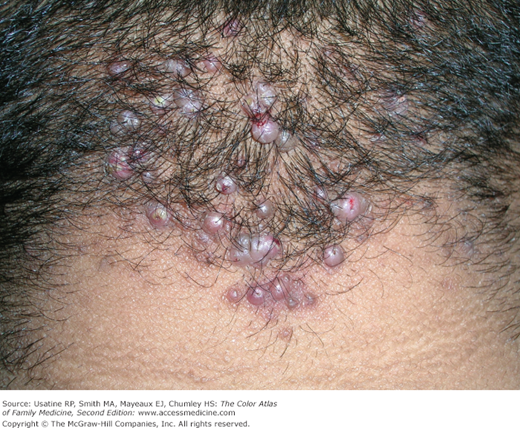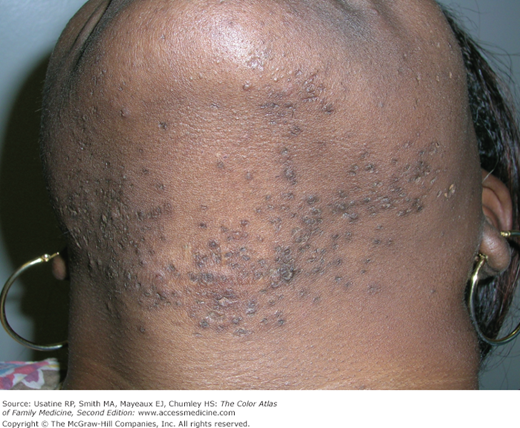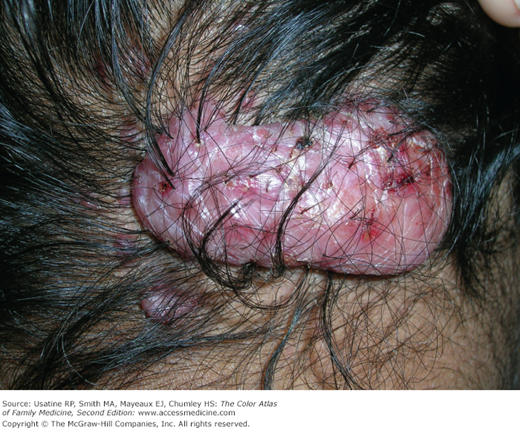Patient Story
A 17-year-old young African American man comes to the office because, for the past 2 years, he has been bothered by the uncomfortable bumps on the back of his neck (Figure 114-1). He is an athletic young man, more than 6 feet tall, and likes to keep his hair short for his sports. He notices the bumps get irritated and larger when he shaves his hair. He also has bumps on his face that get worse when he shaves his face (Figure 114-2). He is diagnosed with pseudofolliculitis barbae and acne keloidalis nuchae. His treatment consisted of patient education and twice-daily tretinoin cream and 0.1% triamcinolone cream to the neck area and nightly tretinoin cream to the beard area. He was told he could use 1% hydrocortisone cream on his face as needed. It was suggested that he minimize shaving, if possible.
Figure 114-2
Pseudofolliculitis barbae along the jawline and neck in the patient in Figure 114-1. (Courtesy of Richard P. Usatine, MD.)
Introduction
Pseudofolliculitis is a common skin condition affecting the hair-bearing areas of the body that are shaved (Figures 114-2, 114-3, 114-4). Potential complications include postinflammatory hyperpigmentation, bacterial superinfection, and keloid formation.
Synonyms
Epidemiology
- Pseudofolliculitis is most common in black men, with at least 50% of black men who shave being prone to the condition.1 In the beard area it is called pseudofolliculitis barbae, and when it occurs after pubic hair is shaved, it is referred to as pseudofolliculitis pubis. It may also occur in the neck area.
- Acne keloidalis nuchae occurs most often in black men but can be seen in all ethnicities (Figures 114-3 and 114-5). The lesions are often painful and cosmetically disfiguring.
- Both conditions are seen in women but far less often than in men (Figure 114-6).
Etiology and Pathophysiology
- Pseudofolliculitis develops when, after shaving, the free end of tightly coiled hair reenters the skin, causing a foreign-body-like inflammatory reaction. Shaving produces a sharp free end below the skin surface. Tightly curled hair has a greater tendency for the tip to pierce the surface of the skin and form ingrown hairs. This explains the relative predominance of this condition in patients of African ethnicity. The hair eventually forms a loop and if the embedded tip is pulled out there may be spontaneous resolution of symptoms.
- The exact cause of acne keloidalis is uncertain. It often develops in areas of pseudofolliculitis or folliculitis. It may be associated with haircuts where the posterior hairline is shaved with a razor and with tightly curved hair shafts. Other possible etiologies include irritation from shirt collars, chronic bacterial infections, and an autoimmune process. It is a form of primary scarring alopecia.2 As such, multiple hairs can be seen growing from single follicle (hair tufts) in the midst of the keloidal scarring (Figure 114-7).
Stay updated, free articles. Join our Telegram channel

Full access? Get Clinical Tree


